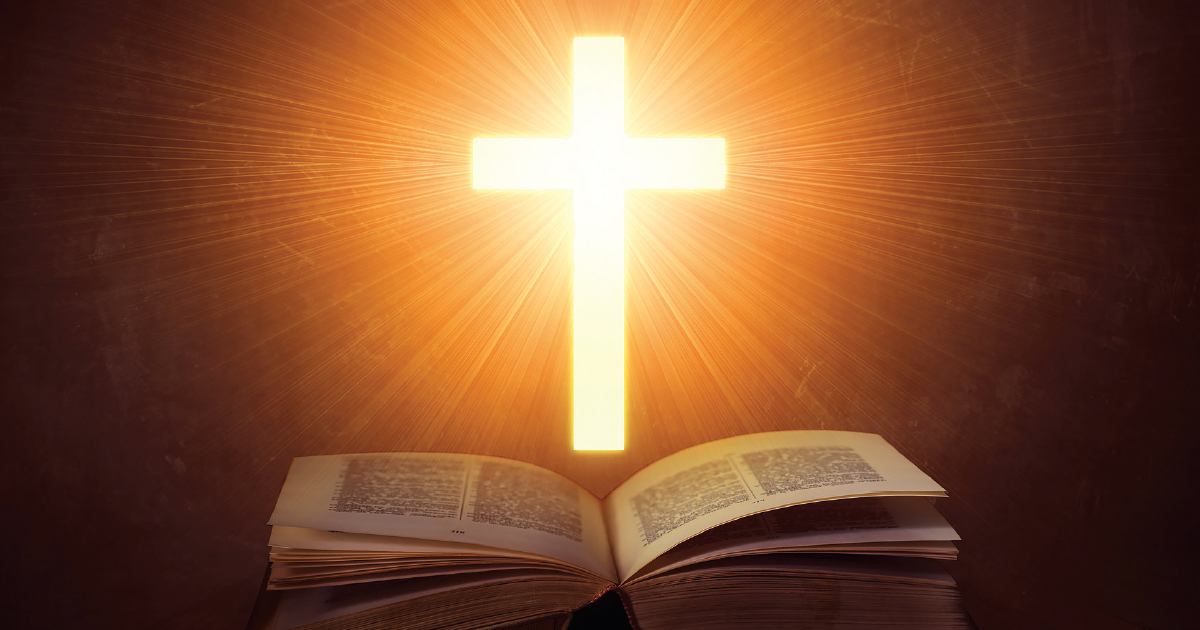It had been a roller-coaster few weeks for the disciples of Jesus. It began, oddly enough, with the healing of a blind man at Bethsaida (see Mark 8:22-26). What stands out about this healing story is that Jesus’ initial attempt at giving the man his sight was only partially successful: the man could now see vague outlines, but nothing more. It took a second application of Jesus’ hands to fully restore the man’s sight.
The next scene at Caesarea Philippi was memorable (see Mark 8:27-30). Jesus quizzed the disciples about the kind of responses he was receiving from the crowds: “Who do people say that I am?” When Jesus asked what the disciples themselves thought of him, Peter blurted out, “You are the Messiah!”
Surprisingly, Jesus ordered the disciples to tell no one. Immediately, he began to teach the disciples that he must suffer and die, to be raised from the dead three days later (see Mark 8:31-33). To Peter and the others, this was inconceivable. Hadn’t he just professed his conviction that Jesus is the Messiah? How could the Messiah suffer and die? That simply wasn’t in Peter’s understanding of the job profile for the Christ.
Like the blind man’s partially restored sight at Bethsaida, Peter had seen vaguely the truth about Jesus. But he did not see clearly what it meant for Jesus to be the Messiah. This would require further teaching. Thus, Jesus began to teach those who were following him about the nature of his mission and its implications for their discipleship (see Mark 8:34-38). Being a disciple of Jesus, it turns out, is not about power, profit and position; it is about suffering, sacrifice and service.
The Way of the World
Two more times in Mark’s Gospel Jesus predicted his own suffering, death and Resurrection in increasing detail (see Mark 9:30-32; 10:32-34). Each time, the disciples showed that they had misunderstood what following Jesus the Messiah meant. Their working assumption was that Jesus was a conquering Messiah whose destiny was power and glory. As his closest followers, they were hoping for positions of authority and power, so that they could lord it over their subjects.
For this reason, in Mark 9:33, the disciples argued about who among them was the greatest; and in Mark 10:35-37, James and John asked Jesus to grant them the positions of highest authority in his kingdom. When they heard about the request of James and John, the other disciples were angry; apparently, they thought they were being cheated out of something. The disciples, it seems, were not seeing clearly. Yes, they correctly identified Jesus as the Messiah; no, they didn’t understand what this meant. Like the blind man at Bethsaida, they had only partial sight.
The words of Jesus after this third and final prediction of his passion are noteworthy: “You know that among the Gentiles those whom they recognize as their rulers lord it over them, and their great ones are tyrants over them. But it is not so among you; but whoever wishes to become great among you must be your servant, and whoever wishes to be first among you must be slave of all. For the Son of Man came not to be served but to serve, and to give his life a ransom for many” (Mark 10:42-45 NRSV).
In these few sentences, Jesus set up a fundamental contrast between the ways of leadership in the world—here characterized as “Gentiles”—and the ways of leadership among his followers. In the world it is common practice to wield power over others—to lord it over others—and to act as tyrants. That’s what leadership often involves in the world. The disciples, for their part, appear to have bought into this model. They thought Jesus’ messiahship was simply about replacing one group of tyrants (the Romans and the Jewish authorities who wielded power under their auspices) with another group of tyrants (Jesus as the messianic leader and his disciples who would brandish power under him).
The failure of the disciples to grasp the revolutionary nature of Jesus’ messiahship was so entrenched precisely because it conflicted with their own conceptions of what was or wasn’t in it for them. This raises questions for me about why they were following Jesus in the first place. I suspect, given their responses to Jesus’ passion predictions, that the disciples were attracted, at least in part, to the prospect of Jesus as the Messiah who would cast the Roman occupiers out of the land and establish a new Jewish kingdom in Jerusalem. In that scenario, questions about who among them was the greatest and who would hold the senior positions in the new administration were entirely relevant. The disciples were blinded by their own ambition.
What Jesus tried to impress upon his disciples was that this ambition is ruled out of order by his Crucifixion. The messiahship of Jesus is revolutionary because it turns upside down our preferred understanding of God’s work in the world, and of our place in that divine mission. The quest for power and influence is excluded. This may not make any more sense to us than it did to Peter and the other disciples. We are attracted by worldly wisdom.
The Way of the Messiah
The Apostle Paul found similar problems of Christians lording over one another in Corinth. It seems that the church there was wracked with divisions and power struggles. Paul appealed to the Crucifixion of Jesus to render such quests for power out of bounds. Especially in the early chapters of 1 Corinthians, Paul contrasts the wisdom of God in Christ’s Crucifixion with the wisdom of the world (see 1 Corinthians 1-2). He contrasts the apparent weakness of God in the Crucifixion with the apparent potency of worldly power, only to claim that divine weakness is stronger than worldly power. In other words, the fact of Jesus’ Crucifixion radically reshapes the Christian understanding of power and leadership.
Just as the disciples found it difficult to “see” what Jesus was teaching them about messianic leadership, so, too, Christian leaders often adopt the leadership models employed by “Gentiles” rather than following the cruciform leadership model of Jesus. We fail to hear Jesus’ ringing assertion, “Not so among you!” Categorically, Jesus rules out this conquering-hero model of leadership among his disciples and within his kingdom. It’s not just relatively wrong; it is fundamentally incompatible and irreconcilable with following a suffering, crucified, resurrected and servant Messiah.
But the appetite for power over others is strong, and the rationales to justify it come with the shared wisdom of our culture. This can be especially the case in Christian churches and organizations where leadership is often cloaked in subtle (and not-so-subtle) claims of divine authority, including authority over others. But according to Mark’s telling of the story, the disciples were not seeing clearly. This might be the way of the world (“Gentiles”), but it is not the way of the crucified Messiah.
Seeing Clearly
As Mark continues to recount the story of Jesus, two subsequent episodes stand out. First, immediately after the third passion prediction of Jesus in Mark 10:32-45, there is the healing of yet another blind man—Bartimaeus (see Mark 10:46-52). In this healing story, Bartimaeus is healed immediately; he sees clearly. Perhaps the placement of this story at this point in Mark, after Jesus’ three predictions of his suffering and his instruction about discipleship, is not accidental. Is Mark telling us that to see Jesus clearly as the Messiah we must first see him crucified? And further, is Mark telling us that leadership among Christians must be shaped decisively by the wisdom of the cross rather than the wisdom of the world? The second episode leads me to think so.
There is only one human character in Mark who acknowledges Jesus as the “Son of God.” At Golgotha, after Jesus had been crucified and had breathed his last, a Roman centurion (not one of the disciples) exclaimed, “Truly this man was God’s Son!” (Mark 15:39 NRSV). This Roman soldier had seen what the disciples had failed to see clearly—that Jesus’ messiahship is defined by the cross, not by a conquest. Jesus is revealed as the Son of God in his Crucifixion. For his disciples, including those who would follow Jesus today, the cross redefines what it means to follow Jesus and how we relate to one another. The cruciform shape of leadership among Christians is not optional; it is foundational.
Dr. Donald E. Burke is a professor of biblical studies at Booth University College in Winnipeg.
Illustration: HiddenCatch/iStock via Getty Images Plus
This story is from:










Comment
On Tuesday, October 26, 2021, Donald Burke said:
On Tuesday, October 26, 2021, Concerned said:
On Thursday, October 21, 2021, James Read said:
Thank you, Dr Burke, for helping me to see the connection between the miracle of the blind man's partial restoration of sight with the miracle of the (first) disciples' limited understanding of Jesus. My experience is that as present day disciple I too generally live with limited understanding, seeing "in a mirror, dimly" (as 1 Corinthians 13 NRSV puts it). I need to remember that even the bit of insight I have is itself a miracle--one evidence of God's grace to me. Now, my task is to be thankful for the understanding I have, not to pretend that I see more than I actually do, and await the day when I will see as I am seen.
Leave a Comment